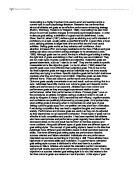A recent showed that goal setting led to performance enhancement in 78% of sport and exercise (R.Singer et al, 2001). Goal Setting is used in order to give an individual a reason to percivere with tasks and exercise as it gives them something to work towardsand can enable them to feel satisfied and rewarded once their goal is achieved. J.Taylor and G.S.Wilson (2005) state 'Reports by coaches and athletes indicate that the use of goal setting enhances motivation and improves performance.” Goal setting is a great way to encourage someone to continue with physical activity and is an extremely powerful technique for enhancing performance but it must be implemented correctly. (S.Weinberg and D.Gould 2007)
There are 3 types of goals, outcome, performance and process goals. Outcome goals refer to the desired result of a competition, for example finishing first in a swimming race, or winning the premier league in football. Therefore achieving an outcome goal can rely on others and is less specific to the individual. (S.Weinberg and D.Gould 2007) Process goals refer to what the athlete should focus on whist performing a sporting skill (A.S.Kornspan 2009) for example improving a follow up on a shot in netball. Finally, S.Weinberg and D.Gould (2007) explain how a performance goal is referred to an athlete’s actual performance in relation to their own standard of excellence and are under athlete’s control. For example, to improve their high jump height from 5ft 9 inches to 6ft. Although outcome goals are considered important and are what individuals want to achieve most, performance and process goals are considered more important as they relate specifically to the individual and their performance. Goal setting works and is so successful as process and performance goals influence behavior indirectly by affecting important psychological factors such as anxiety and confidence.
Aswell as goal setting, other strategies such as imagery can be used in order to increase an individuals exercise adherence. Imagery is the mental creation or re-creation of sensory experiences that appear to the person imagining themselves to be simular to the actual event. (Suinn 1993) Mental imagery involves the athletes imagining themselves in a specific environment or performing a specific activity. The images should have the athlete performing these items very well and successfully. They should see themselves enjoying the activity and feeling satisfied with their performance. Imagery is a powerful tool that can be used in order to increase an individuals exercise adherence, many athletes, professional and amateur imagine and picture themselves performing their upcoming tasks excellently, and this tool has proved to have a positive effect on actual performance.
Golfing great Jack Nicklaus used mental imagery. In describing how he images his performance, he wrote:
"I never hit a shot even in practice without having a sharp in-focus picture of it in my head. It's like a colour movie. First, I "see" the ball where I want it to finish, nice and white and sitting up high on the bright green grass. Then the scene quickly changes, and I "see" the ball going there: its path, trajectory, and shape, even its behaviour on landing. Then there's a sort of fade-out, and the next scene shows me making the kind of swing that will turn the previous images into reality only at the end of this short private Hollywood spectacular do I select a club and step up to the ball."
This statement written by J.Nicklaus proves that many professionals use mental imagery and it is a great way to increase exercise adherence.
In conclusion both goal setting and imagery are great psychological strategies to use in order to increase an individuals exercise adherence, as drop out rates for sport are high and with many people not participating for various reasons. It is important that strategies such as imagery and goal setting are used to encourage people to take part in physical activity; this is because sport brings many physiological, social and psychological strategies that everyone should experience.
FOUNDATIONS OF SPORT AND EXERCISE PSYCHOLOGY ROBERT. S.WEINBERG AND DANIEL GOULD 2007
FUNDAMENTS OF SPORT AND EXERCISE PSYCHOLOGY ALAN>S>KORNSPAN 2009
APPLYING SPORT PSYCHOLOGY: FOUR PERSPECTIVES, JIM TAYLOR & GREGORY S WILSON 2005
http://www.goal-setting-guide.com/goal-setting-tutorials/smart-goal-setting
http://www.brianmac.co.uk/mental.htm
IMAGERY IN SPORT, TONY MORRIES< MICHAEL SPITTLE and ANTHONY P WATT 2005
ADVANCES IN SPORT PSYCHOLOGY T>S HORN 200818:18
Exercise adherence refers to the strength of an individual's commitment to performing physical exercise. People with strong exercise adherence continue physical activity despite opportunities and pressures to withdraw. However, many recreational exercisers quit within 6 to 8 weeks of starting. Adherence improves significantly when exercisers have good family support. Far fewer spouses who exercise together drop out compared with married people who exercise on their own. Exercise adherence is also higher among those who set themselves achievable but challenging goals; whose exercise is supervised or monitored by a coach or trainer; and whose exercise is not intensive to start with, but which becomes gradually harder.
18:18
Exercise adherence refers to the strength of an individual's commitment to performing physical exercise. People with strong exercise adherence continue physical activity despite opportunities and pressures to withdraw. However, many recreational exercisers quit within 6 to 8 weeks of starting. Adherence improves significantly when exercisers have good family support. Far fewer spouses who exercise together drop out compared with married people who exercise on their own. Exercise adherence is also higher among those who set themselves achievable but challenging goals; whose exercise is supervised or monitored by a coach or trainer; and whose exercise is not intensive to start with, but which becomes gradually harder.








